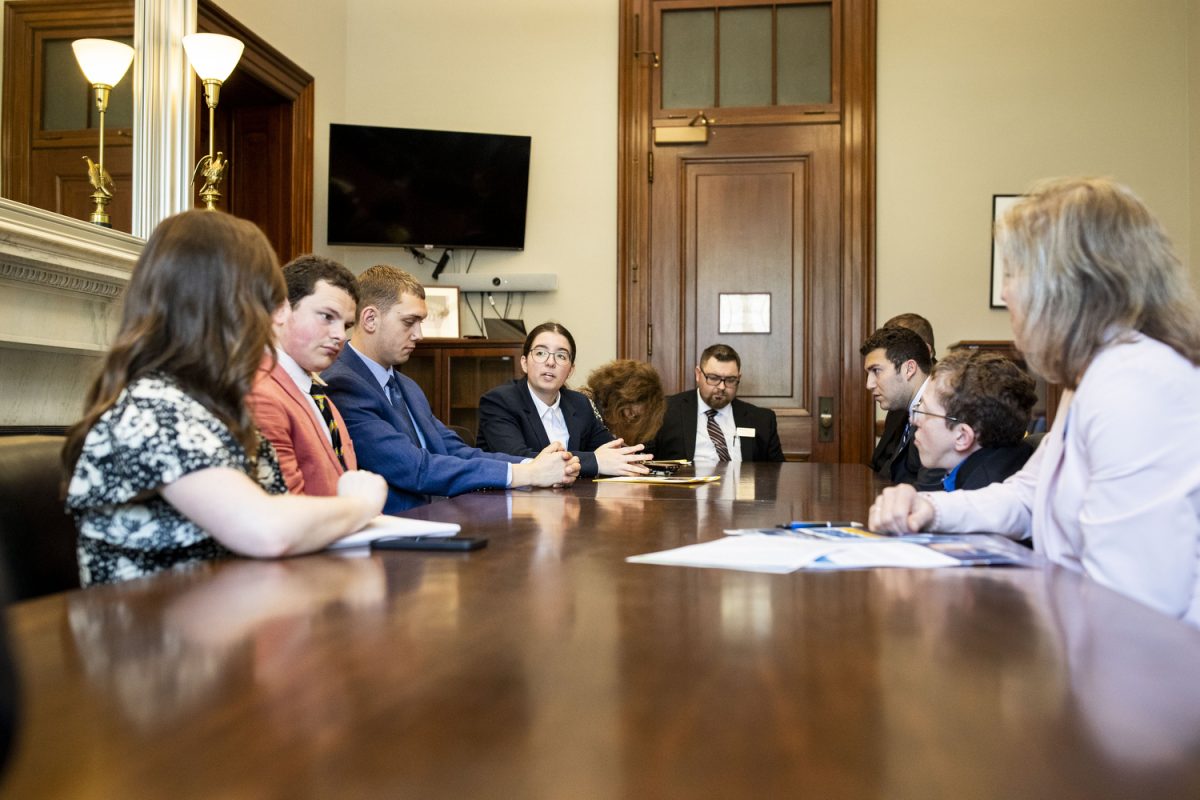When Sarah Hansen first started working at the University of Iowa 25 years ago, she didn’t have her sights set on her current position as the vice president for student life.
In her time at the UI, Hansen has consistently worked in some sort of division or department that related to student life. She started in Health Promotion and Health Education — now known as Student Wellness — and eventually worked her way up from an entry-level position to being selected as the vice president for student life in April 2020.
“I think I got here by doing good work where I was each time, and I just kept getting new opportunities,” Hansen said.
Hansen is one of six women administrators on the president’s cabinet, which has 13 total members, not including President Barbara Wilson. According to the cabinet’s website, cabinet members are institutional leaders who provide advice to the president on strategic and operational matters.
Currently, eight of the UI’s 12 colleges are led by women deans. This follows a trend of more representation in administrative and executive positions.
According to a 2023 report from the UI on workforce demographics, women made up just under 39 percent of executive, administrative, and managerial staff in 2013. A decade later, women made up just over 50 percent of that group.
This data follows a national trend. From 2002 to 2022, the percentage of women in administrative positions in higher education in the U.S. increased from 43 percent to 51 percent, according to the College and University Professional Association for Human Resources.
Wilson said the UI does not have any hiring initiatives that specifically target women but rather that the university hires the best fit for a job and has a diverse view of what leadership can look like.
“I think that’s important that it’s not just a one-time thing to sort of say ‘There, we did it,’” Wilson said. “It’s finding the best people for these jobs and then thinking expansively about what leadership looks like and how it gets manifested on our campus.”
Wilson, who started her position as the UI’s president in July 2021, is the university’s third female president. In 2021, five Big Ten universities had female presidents, including Wilson.
Having women in administrative and non-administrative positions in a university is important, as it can give younger women several role models to look up to, said Karen Agee, president of the Iowa branch of the American Association of University Women.
Often, the higher a position ranks in a university, the less visible and accessible that person is to the student body, so it is important to have female representation in all areas of a university, Agee said.
“Women faculty and women department heads are giving students probably the likeliest opportunity to view a woman administration,” Agee said.
According to the 2023 UI workforce demographics report, women made up over 66 percent of the total workforce of nearly 20,000 at the university. In 2013, that number was 64 percent out of over 16,000 members.
In 2023, women made up nearly 36 percent of tenure or tenure-track faculty and 54 percent of non-tenure-track faculty, according to the workforce demographics report. In 2013, women made up nearly 33 percent of tenure or tenure-track faculty and just under 49 percent of non-tenure-track faculty.
Agee also said it is important to have women represented in positions that inform the executives and administrators of a university, such as the state board of regents. At the April 24 Iowa Board of Regents meeting, Sherry Bates was unanimously voted to serve as the regent’s president until 2026.
Additionally, the regents selected Greta Rouse was unanimously selected to serve as the board’s President Pro Term at the April 24 meeting.
Hiring more female representation in leadership positions also ensures a broader range of viewpoints and experiences are being represented in university decisions, Hansen said.
“Even as I’ve kind of put together my senior team, I’ve tried to find people who have strengths that I don’t and who have identities and perspectives and histories that I don’t,” Hansen said. “Because I know that they’re going to help me see things that I don’t see, and help me make better decisions.”
Female representation in the student body at the UI has also grown over the past decade. In fall 2022, women made up around 55 percent of the total student body, and men made up around 43 percent. In fall 2013, women made up about 51 percent of the student body, with men comprising approximately 49 percent of the total.
While there has been positive growth in recent years for female representation in the UI’s workforce, this has not come without difficulties. Hansen said while she did not find it difficult to find leadership opportunities in higher education, there have been stereotypes placed on her because she is a woman.
“I’ve been called mean when I was direct, or I’ve had people say that I don’t like them if I’m direct,” Hansen said. “I’ve never really heard that said about a man.”
Hansen said these experiences have taught her to be more assertive and not allow herself to be spoken over by her male counterparts. These experiences are not unique to any one institution and are felt by women in any workforce, she said.
“It’s here no matter where you are, I think,” Hansen said. “Certainly I have more tools at my disposal to be able to make decisions now than folks who might not have the leverage that I have, but I think it’s everywhere for women.”
Shreya Reddy contributed to this report.















